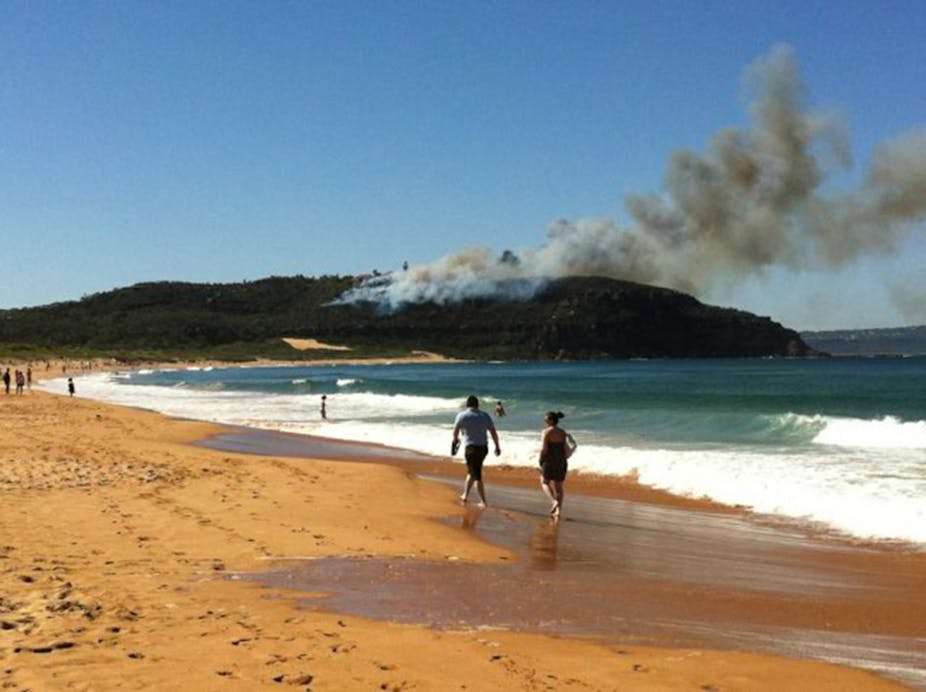The early start to the bushfire season in NSW - 80 fires were burning yesterday across the state - will prompt many rural residents and the fire authorities to worry about whether this summer will see a repeat of last season’s drama in NSW or the terrifying ferocity of the 2009 Victorian bushfires.
Predicting bad fire seasons is very difficult, since it depends on the forthcoming rainfall pattern and the occurrence of “blow-up” days, and both of those are difficult to predict. But one thing we can predict confidently is that if large destructive fires do occur, there will be controversy and debate about who or what is to blame. This is bound to revolve around the role of planned burning.
So in an attempt to head off the blame-game, it is worth taking stock of what the scientific evidence actually says about reducing the risk of house loss from bushfire.
Most bushfires start near houses
In the Sydney region, 40% of all bushfires ignite within 2km of the interface where forest meets houses. This figure rises to 79% if we consider only fires that actually burn to the interface on days of extreme fire weather.
So the main source of fires is not our wild areas, but arson and accidents near residential areas.
Many factors that contribute to the risk of house destruction: householder preparedness, the response of fire-fighters, house construction, the garden and the wider landscape. These are complex matters.
But it is safe to say that building (and maintaining) houses to the Australian Standard for Construction of Buildings in Bushfire Prone Areas helps, and that householder preparedness makes a big difference. But most households are poorly prepared.
Important factors in the landscape are the distance to the nearest bushland, the total amount of bushland fuels up to 1km around the house and the number of other houses within about 50m. These risk factors can be reduced by increasing the setback between houses and bushland, planned burning and reducing the flammability of the nearby houses.
Planned burning has a small effect on bushfire risk
Planned burning temporarily reduces fuel load. This has a small but measurable effect in reducing ignition rates. It has a more substantial effect in reducing rate of spread and intensity of bushfires.
However, most planned burning patches never encounter a bushfire during their effective lifetime. In any case, bushfire can burn even through one-year-old patches.
Weather is the primary driver of fire behaviour. In catastrophic fire weather, recent burning has little effect on how a fire behaves.
All of these complex effects can be summarised by a measure called “leverage”. This is the reduction in bushfire area achieved through planned burning. In the forests of southern Australia leverage is about 0.33. This means the current rate of bushfire in forests could be halved from about 5% to 2.5% annually by treating about 7% annually.
This would mean almost doubling the total area burnt each year. That may have negative consequences for biodiversity, smoke pollution and greenhouse gas emissions. Escaped planned burns are also a risk.
For full risk prevention, stay away from trees
Given that most fires start near houses, and that burnt patches rarely encounter bushfires (which burn through them anyway), planned burns are best applied where stopping bushfires is most important: near houses.
Planned fires reduce fire intensity and hence fire-load on the houses and increase the chances of suppressing the fire. So fire management agencies concentrate their efforts in this zone.
Remember though that planned burning has little effect under catastrophic weather, so it is an uncertain form of protection.
Bushfire risk reduction is most effective in and around houses and householders themselves are the ones who can make the biggest difference. But the only way to eliminate risk entirely is to move the houses away from vegetation altogether.

